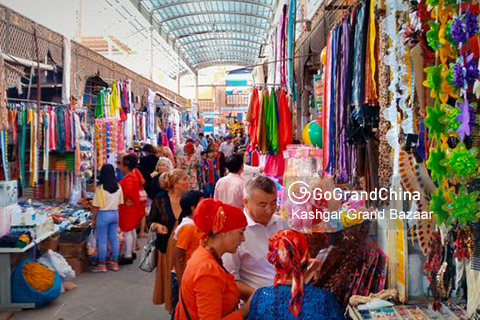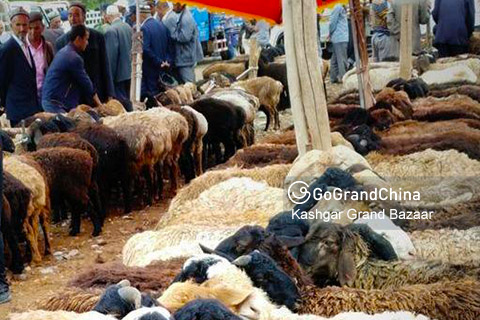You have no items in your shopping cart.
Kashgar Old Town
Introducing Kashgar Old City
Kashgar Old City is one of the world’s oldest cities with continuous habitation. Kashgar Old City boasts a history that spans over 2000 years. Kashgar Old City served as a crucial oasis on the Silk Road, connecting China, the Middle East, and Europe. The Old City is a unique, well-preserved urban block with a labyrinth-like layout, reflecting its Islamic culture. It occupies an area of 4.25 square kilometers and is home to approximately 126,800 residents.
The Old City also hosts several notable historical landmarks, including the renowned Kashgar Century-old Teahouse and Gaotai Ancient Homes. These sites provide visitors with a peek into the city’s rich history and dynamic culture. Despite being rebuilt, the Old City has retained its traditional style. The crisscrossing streets are lined with local residences and shops, painting a vibrant picture of Xinjiang Uygur folk customs.
Kashgar Old City Fast Facts
• Chinese Name: Ka Shi Gu Cheng 喀什古城
• Best Time to Visit: May to October
• Recommended Visiting Hours: Half Day
• Things to Do: Photography, Local Folk Customs, Architecture
• Opening Hours: All day
• Entrance Fee: Free
• Address: No.10 Yawage Road, Kashgar City, Xinjiang Uygur Autonomous Region
What to expect at Kashgar Old City
Traditional Islamic-and-Uygur-Style Houses
The Old City is the soul of Kashgar, it is "the best-preserved example of a traditional Islamic city to be found anywhere in Central Asia". Filmgoers may recognize it from The Kite Runner, where it doubles as Kabul. Houses here range in age from 50 to 500 years old and the lanes twist haphazardly through neighborhoods where Kashgaris have lived and worked for centuries. Traditional houses in Kashgar, rarely more than two storeys high, are built with poplar timber and mud bricks. Walls are very thick but usually unadorned on the outside. The inner courtyards and balconies, however, are decorated with woodcarvings and hangings. To walk through the narrow lanes of the old city is to walk into living history. Around 220,000 Uyghurs live in this mud-brick labyrinth. Amid these tiny alleys, you are walking straight into people's lives. Craftswomen stitch doppas, the traditional four-cornered hats. Crop-haired girls in bright frocks and mismatching plastic sandals giggle and shove as they see strangers; then sing and dance for their audience. It’s a great place for strolling, peeking through gates, chatting to the locals and admiring the craftspeople as they bang on tin and chase copper.
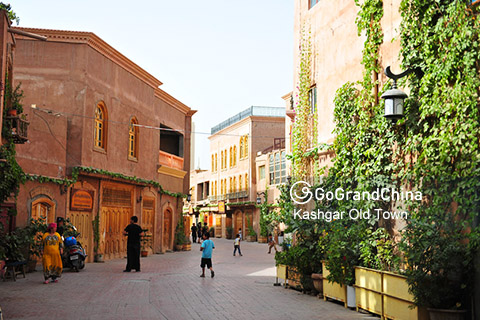
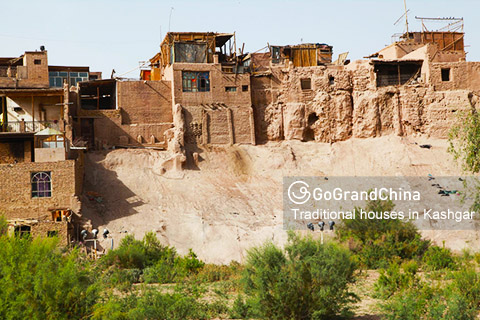
Kashgar Handicraft Street
The handicraft street is located within the 'rebuilt' old town of Kashgar, right next to the IdKah Mosque and the Kashgar central square. Shops spill out onto the street and everyone is busily engaged in their craft. Shop fronts are structurally intricate wonders themselves. Carpenters, the smithy and the metal workers are all working away in tiny workshops. Here at the handicraft street, you will find ceramics, woodcarving, metalworking, traditional musical instruments, textiles, carpets, foodstuffs, etc. Wander the streets and soak up the history of Kashgar as you wander around. Go with an appetite as the street food will tempt you to buy. The One Hundred Year Teahouse located on the second story of an old building is worth a visit. Locals play traditional music and sing and dance spontaneously on the balcony.
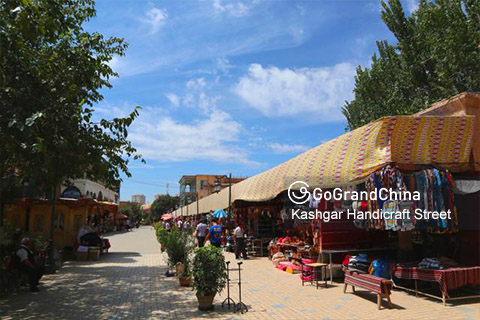
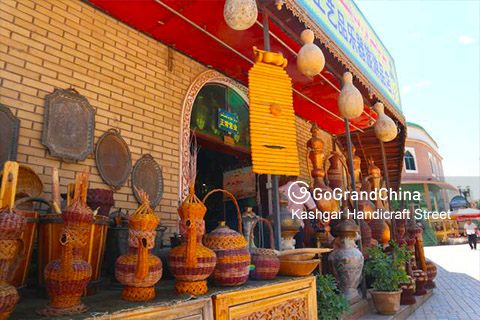
Kashgar Grand Bazaar
With a history of more than 2,000 years, Kashgar Grand Bazaar was well-known as the "biggest market in Asia" in ancient times. The full name of Kashgar Grand Bazaar is Central and West Asia International Trading Market and it is now the largest market for farm produce in Xinjiang. Occupying a total area of 41 acres and offering 21 specialized markets, Kashgar Grand Bazaar has more than 4,000 fixed booths and one food street, offering more than 9,000 kinds of commodities in rich varieties. Annual trading volume at the bazaar hits about CNY125 million. Every Sunday, the bazaar is very busy with a constant stream of vehicles and people and sometimes, customers at the bazaar can reach more than 100,000. Join the crowds at the Grand Bazaar and experience the city’s enduring mercantile heritage. Vendors and goods from all over the region and beyond convene at the bazaar. There are dried fruits from Saudi Arabia, handicrafts from Pakistan, scarves from Turkey, and much more. The bazaar is open seven days a week, but Sunday is the busiest day because certain goods are only there on Sunday, such as livestocks where sheeps, cows, donkeys, and even camels are available to buy.
How to get to Kashgar Old City
• Take bus 2, 8k, 13, 22 or 28 and get off at Id Kah Mosque.
• Rent a car/bus from GGC to enjoy a hassle free private transfer from hotels in Kashgar to Kashgar Old City.
Additional travel advice on Kashgar Old City
• Please respect the Muslim traditions and customs of local people.
• It is not suggested to take photos of locals at the market without permission.
There are no products matching the selection.


